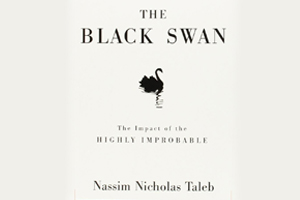Author: Jim Paul and Brendan Moynihan
While investing greats and legends offer brilliant advice on how to mint money and invest effectively, sometimes, it is also important to focus on the underbelly of investments. As the title of Jim Paul and Brendan Moynihan’s book suggests, this treatise is all about failure and, most importantly, learning from failure. Jim Paul’s story acts as a cautionary tale for the many Icarus’s of investing – a tale of rising to the top and then losing everything in a wink.
Paul made his mark as the governor of the Chicago Mercantile Exchange, rising from his humble origin in a small town in Northern Kentucky. However, he then made a disastrous decision which ended up in the loss of everything he had struggled to achieve – his position, his wealth as well as his reputation. A frank and disarmingly honest analysis of what went wrong, What I Learned Losing a Million Dollars is both a guide on what not to do and a guide on some of the biggest lessons on managing wealth. The book, which won the 2014 Axiom Business Book award gold medal, will also take you through the psychological factors which triggered poor financial decisions in various economic sectors. The book also offers lessons on strategies for avoiding loss and means to dodge the dangers inherent in investing, trading, and speculating.
Co-author Brendan Moynihan, editor-at-large for Bloomberg News, is known for his writings on the economy and Wall Street. Previously a trader and risk manager, Moynihan also has strong knowledge of the investment landscape and brings his expertise to the table through What I Learned Losing a Million Dollars.
Key takeaways
- Participation in the market cannot be described through terms such as right, wrong, win or lose. Decisions can be good or bad but rarely are they purely right or wrong.
- Trading is the only area where you have the potential for initial and temporary success.
- There are not too many ways to lose money in the market, so, being cautious can help you avoid such pitfalls.
- As a trader, you need to acknowledge and accept that some decisions will end in loss.
- You should have some rules and tools to enable you on your trading and investing journey.
- While your rules may prevent you from benefiting through varied market opportunities, they will help you avoid immeasurable losses.
- As an investor, you should be able to calculate and, thereby manage your losses.
- Make all your trading decisions objectively, in the pre-trade moment, to ensure that you are not swayed by emotions like greed or fear.
As an investor, it is imperative that you focus on two aspects – making profits and avoiding losses as far as possible. If you do not focus on the latter, you will end up losing a million or even more dollars, thus eroding all your hard-earned wealth. By understanding your psyche, and the psyche of the market, you can work towards creating rules and tools which will help you avoid losses and remain in control for most part of your trading journey. While it is true that there may be some unprecedented events to cope with, having a keen understanding of the fallacies and opportunities will keep you safe in the long run. As is often said, fools rush in where angels fear to tread. Take these lessons of failure to heart and ensure that you do not face such a tragedy in your own journey towards wealth.
Lessons from a trader’s recollections
In every field and sector, there is one thing that is certain, and that is failure. In fact, each and every successful investor understands and accepts the fact that failure is, at the end of the day, just a part of the larger game. In addition to this very essential understanding, they also realise that success can be built upon repeated failures, as long as you do not take the failures to heart. A frequently quoted example here is that of Thomas Alva Edison, the scientist credited with the invention of multiple gadgets. Before achieving success, he failed 10,000 times. What made him a success was his perseverance as well as his willingness to learn from his failures. As an investor, you must remember that while smart people learn from their own mistakes, it is the wise that go farther, for they learn from the mistakes made by others.
Learning how to not lose money
The market offers you multifarious ways of making money. However, the one link that connects most successful investors revolves around the ability to not lose money. The market is made up of five types of people including traders, investors, speculators, bettors, and gamblers. Understanding their psyches and learning from their journeys can help you create a roadmap that is both strategic and poised for success. Further, your losses can also teach you various lessons, the first being that loss can be both external and internal. While external losses are objective, internal losses are subjective and personal. Facing such a loss can trigger feelings such as denial, anger, bargaining, depression and, finally, acceptance.
Understanding the nature of emotion
A deep analysis of the market indicates that, usually, losses are triggered by emotion. There are many instances of a market being driven by a crowd’s sentiment, including the tulip frenzy in Holland, in the year 1637. In such scenarios, if you know where you stand and have a longer-term horizon in mind, you would do well to take a contrarian approach, which is a position opposite to that of the larger crowd. When the overwhelming sentiment fades eventually, you stand to make enormous gains. While the crowd usually follows aspects like feelings, emotions, and impulses, you should, as an individual, go with reasoning, deliberation, and analysis as these will keep you in good stead and enable you to avoid the fallacies being perpetuated by the crowd. You must never buy, sell, or trade based on hope or fear because these can lead to mania and panic, when experienced by the crowd, thus leading to herd instinct. Most of the time, people lose money because of psychological factors, and not analytical ones. Therefore, it makes sense to, as an investor, stick with analytical decisions. Avoiding crowd trades is another important lesson to internalise.
Rules of the game
The market, in every sector and geography, has one common factor and that is uncertainty. Markets are nothing if not volatile and you can never be sure when your decision will be good or bad. In this scenario, to ensure profitability and mitigate losses, you need to have some rules and tools in place as these can help you deal with the unending uncertainty in a manner that is suited to your investor profile. While dealing with market uncertainty, you can follow three tactics – engineering, gambling, and speculating. To know where to proceed, you need to first assess and understand what type of participant you want to be – are you a gambler? Do you enjoy speculating and placing your bets accordingly? Or do you look for ways to engineer success? Once you figure out your personality and type of investing, you can then develop rules, establish controls, and come up with a suitable plan. A strategic plan primed for success should consist of the following aspects – time of entry, the stop loss position, and the price objective. Even before you enter the field, determine your stop loss as this will decide how you weather the storm.
Having a plan in place is imperative to avoiding losses because the failure to chart and follow a plan is one of the main reasons behind major market losses. After all, there is no way to guarantee perfect timing – there is no way for you to time the market correctly. While you may have a fluke or two, this cannot be maintained on a regular basis and, sooner or later, your attempts at timing the market will lead to unbearable losses. In such a scenario, having a plan in place can help you remain objective. It can ensure that you follow the rigours of the plan, instead of getting swept up in emotions such as greed or fear, which, consequently, lead to irrational decisions.
As an investor or trader, always remember to have a plan in place, with fail-safes, before entering the market. Do not leave the plan in your mind because, in moments of stress, your mind can play tricks on you. To avoid such a problem, commit your plan to paper and memorize it as well. Spending time with your plan will help you determine its fallacies and also help you commit it into your psyche. Once you do this, you will find that emotions do not sway you unnecessarily. You can find examples of great and effective planning from the reports published by various platforms. You can glean insights from these and work out a plan that suits your unique requirements.
For an investor, entering the market involves parting with your capital, and this parting may be long-term, based on your time horizon, or for a few days. However, if you are not careful, this parting could also be permanent, which is a position none of us wish to be in. To do better, you must learn from the wisdom gathered by investors who came before you. After all, there is no need for you to lose a million dollars just to learn the lessons of prudence. Analyze and gather insights from the mistakes of your predecessors and reduce your chances of losing your hard-earned wealth.
Indeed, mistakes, whether your own or those made by others, can teach you a lot of investing wisely. However, another great way to invest is to let experts with the relevant experience manage your money. Take for example mutual fund managers. These are experts who have experience, have already made and learnt from their mistakes, and have, as a result, established strong strategies that can help you potentially limit your losses and extend your gains. From that perspective, mutual funds are an excellent vehicle that allows you to invest your money as per your return requirement and risk profile and have it managed by expert professionals. Additionally, even with mutual funds, there are certain options that can give you visibility, some degree of certainty in earnings, and potential to limit losses. An ideal example of such a fund would be a Target Maturity Fund. These funds are passive debt funds benchmarked against the underlying bond index. They come with a pre-decided maturity date, making it easier for you to choose funds which align with your investment horizon. Target maturity funds can be of two types – exchange-traded funds and index funds. They can be a great option for you to earn high, tax-efficient returns, in a safe manner, because they invest only in government bonds, state development loans and PSU bonds, which are all either sovereign or quasi-sovereign in nature. This is just one of the many options available for investment in the mutual fund offerings. There are multiple options that can help you meet your specific requirements.
An investor education initiative by Edelweiss Mutual Fund.
All Mutual Fund Investors have to go through a onetime KYC process. Investor should deal only with Registered Mutual Fund (RMF). For more info on KYC, RMF and procedure to lodge/redress any complaints – please visit on https://www.edelweissmf.com/kyc-norms
MUTUAL FUND INVESTMENTS ARE SUBJECT TO MARKET RISKS, READ ALL SCHEME RELATED DOCUMENTS CAREFULLY.
Trending Books
MUTUAL FUND INVESTMENTS ARE SUBJECT TO MARKET RISKS, READ ALL SCHEME RELATED DOCUMENTS CAREFULLY.

















